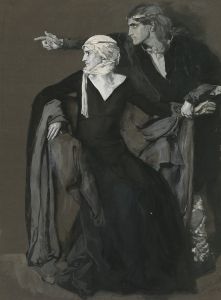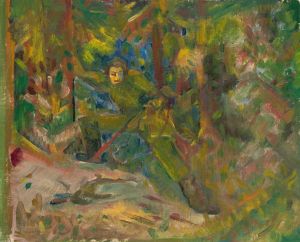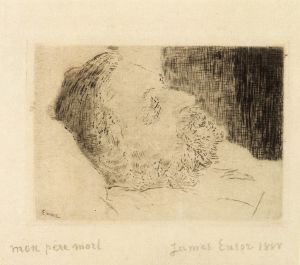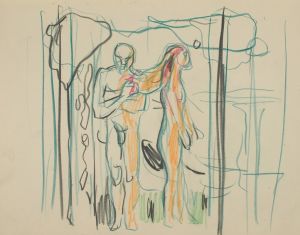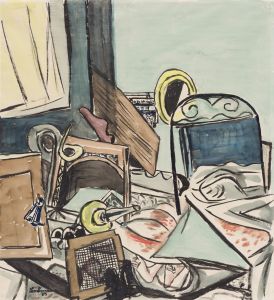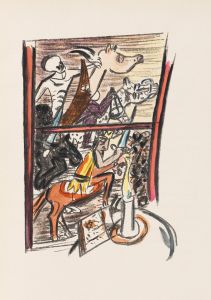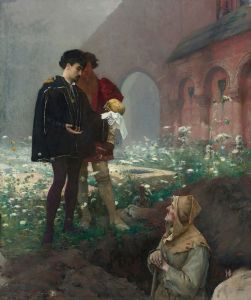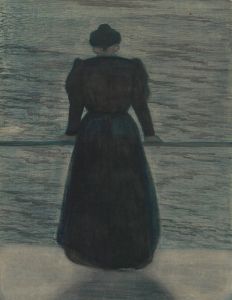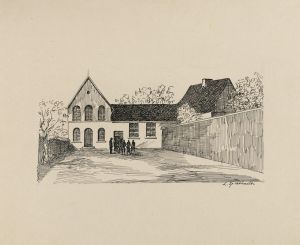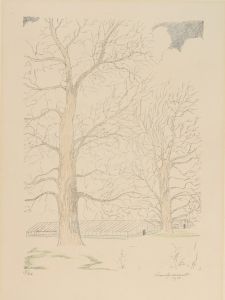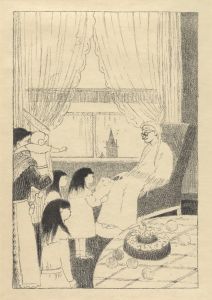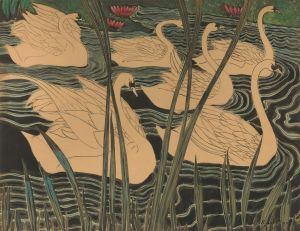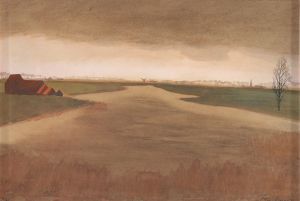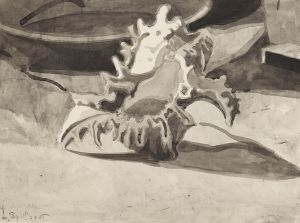
Pop in zetel
A hand-painted replica of Léon Spilliaert’s masterpiece Pop in zetel, meticulously crafted by professional artists to capture the true essence of the original. Each piece is created with museum-quality canvas and rare mineral pigments, carefully painted by experienced artists with delicate brushstrokes and rich, layered colors to perfectly recreate the texture of the original artwork. Unlike machine-printed reproductions, this hand-painted version brings the painting to life, infused with the artist’s emotions and skill in every stroke. Whether for personal collection or home decoration, it instantly elevates the artistic atmosphere of any space.
Léon Spilliaert, a Belgian symbolist painter, is known for his unique and introspective works that often explore themes of solitude, existential angst, and the uncanny. One of his notable works is "Pop in Zetel," which translates to "Priest in Armchair." This painting is a part of Spilliaert's broader oeuvre that captures the mood and atmosphere of early 20th-century Europe, particularly in Belgium.
"Pop in Zetel" is characterized by Spilliaert's distinctive style, which often includes a muted color palette, stark contrasts, and a sense of eerie stillness. The painting depicts a solitary figure, presumably a priest, seated in an armchair. The composition is simple yet profound, focusing on the figure's contemplative pose and the surrounding space, which is rendered with minimal detail. This approach draws the viewer's attention to the emotional and psychological state of the subject, a common theme in Spilliaert's work.
Spilliaert was heavily influenced by the symbolist movement, which sought to express the emotional and spiritual experiences of the artist rather than depict the physical world realistically. This influence is evident in "Pop in Zetel," where the emphasis is on the inner life of the subject rather than the external environment. The painting's somber tones and introspective mood reflect Spilliaert's interest in exploring the depths of human consciousness and the complexities of the human condition.
Born in Ostend, Belgium, in 1881, Spilliaert was largely self-taught, although he briefly attended the Academy of Fine Arts in Bruges. His work was influenced by a variety of sources, including literature, philosophy, and the works of other artists such as Edvard Munch and James Ensor. Spilliaert's unique vision and style set him apart from his contemporaries, and his work is often associated with the broader symbolist and expressionist movements.
Throughout his career, Spilliaert produced a wide range of works, including portraits, landscapes, and interior scenes. His paintings often feature solitary figures in introspective poses, set against stark and sometimes surreal backgrounds. This focus on solitude and introspection is a hallmark of Spilliaert's work and is evident in "Pop in Zetel."
The painting is also notable for its use of light and shadow, which Spilliaert employs to create a sense of depth and atmosphere. The interplay of light and dark areas in the composition adds to the painting's emotional impact, highlighting the isolation and introspection of the figure. This technique is a key element of Spilliaert's style and contributes to the haunting quality of his work.
"Pop in Zetel" is a testament to Spilliaert's ability to convey complex emotional and psychological states through his art. The painting invites viewers to reflect on themes of solitude, contemplation, and the inner workings of the human mind. Spilliaert's work continues to be celebrated for its originality and depth, and "Pop in Zetel" remains an important example of his contribution to the symbolist movement and early 20th-century art.
Today, Léon Spilliaert's works, including "Pop in Zetel," are held in high regard and can be found in various museums and private collections around the world. His paintings continue to captivate audiences with their haunting beauty and profound exploration of the human psyche.





